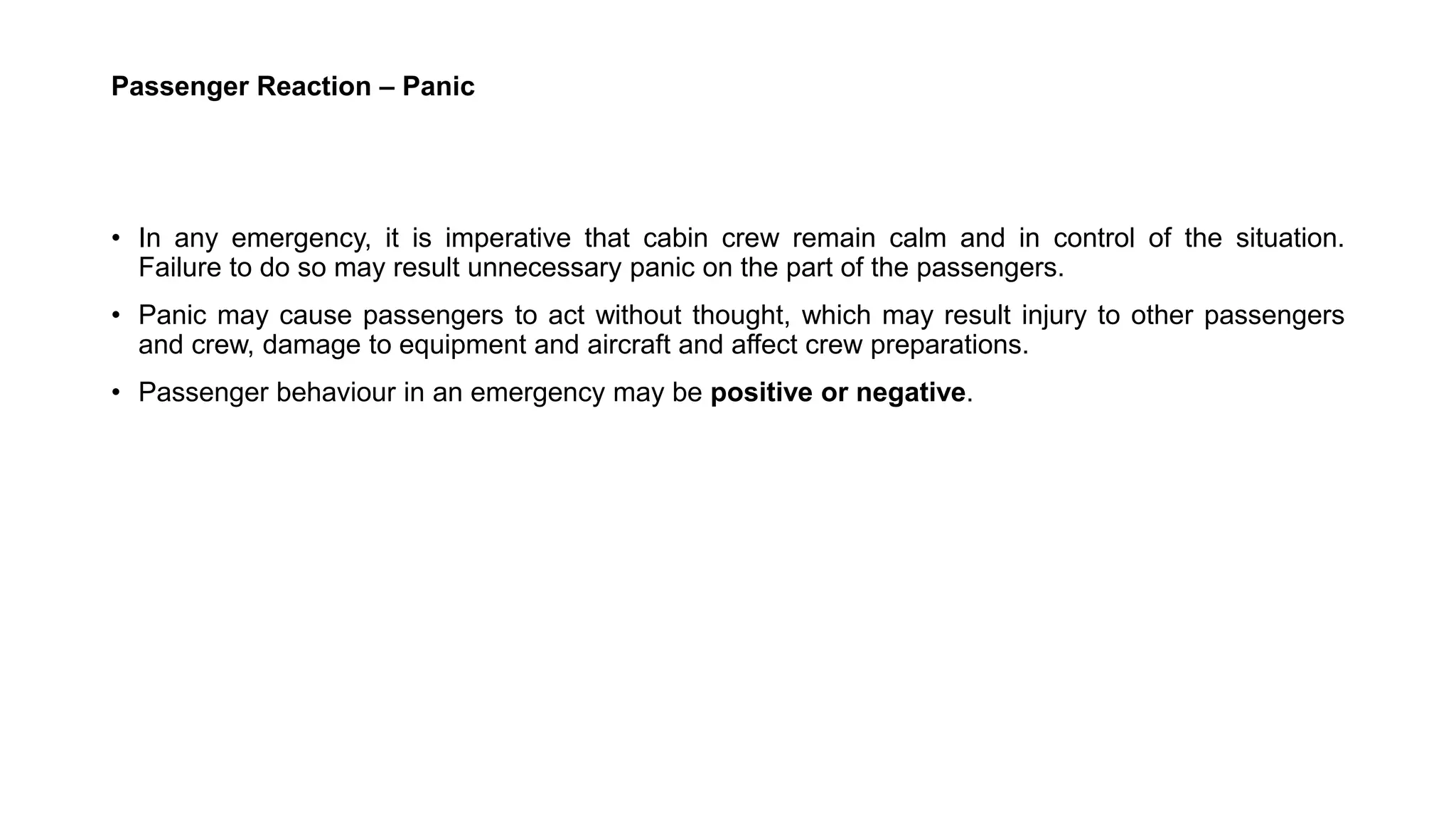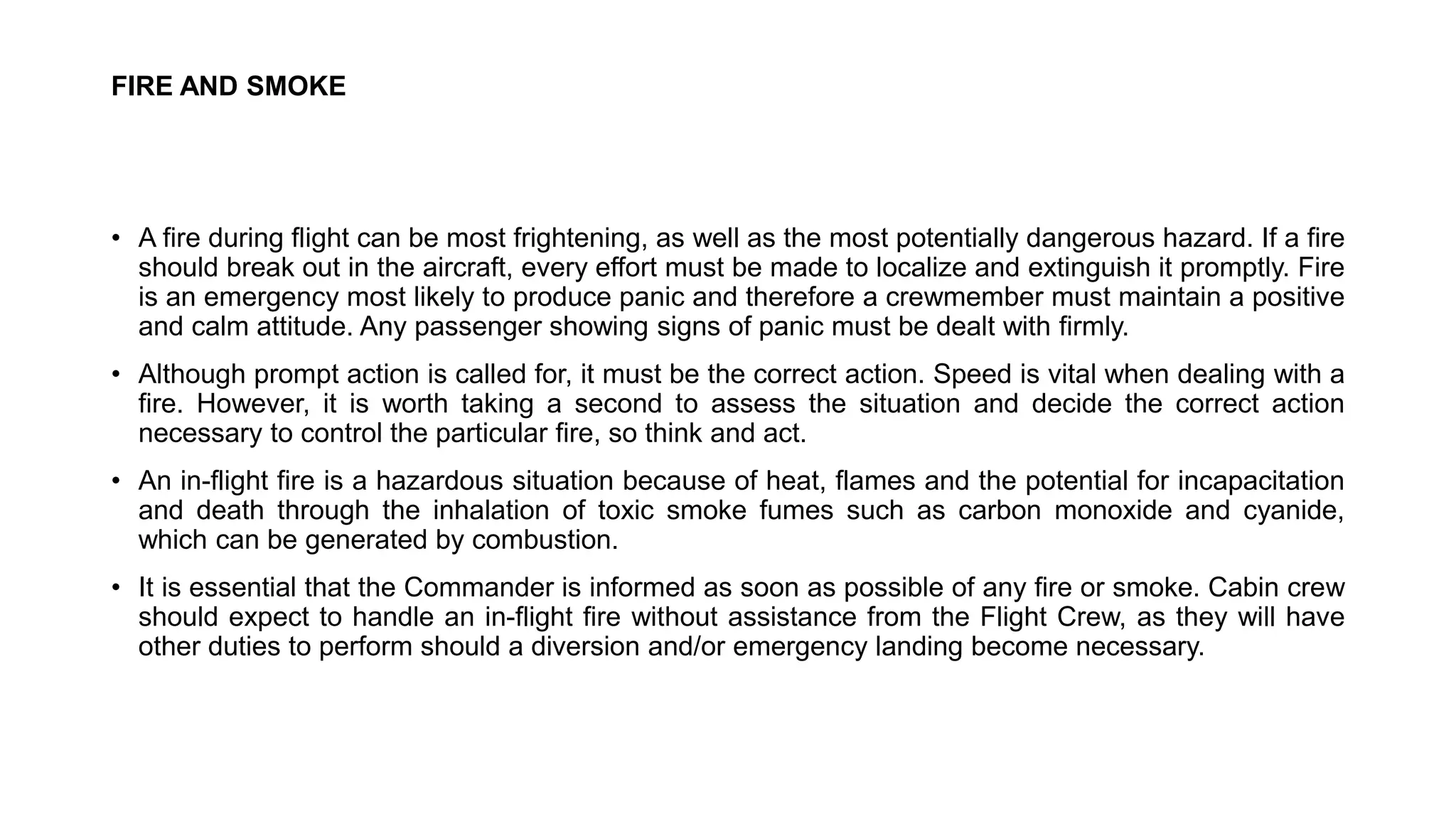This document provides guidelines for cabin crew to handle emergency situations, including fires. It outlines that cabin crew must remain calm and alert to recognize any issues and immediately report them to the captain. For fire emergencies, it describes the fire triangle and how to fight fires by removing oxygen, heat, or fuel. It details that the first crew detects the fire as the "firefighter", the second crew assists and communicates with the captain, and additional crew control crowds and passengers. Fires require prompt but correct action to fight the specific fire safely without causing panic.









